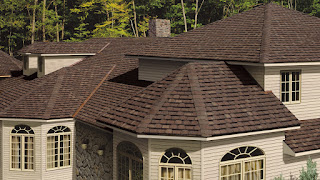What physical and other components influence the roofing companies NYC system choice?
After identifying the aims and mission of a facility, it is time to evaluate the building itself. You need to begin by looking at the building's location as well as the features of its surrounding area. You need to test building codes, weather trends, topography - much how the building faces.
The physical qualities of the construction are also crucial: size, shape, layout, height, and age.
You also ought to look at the construction materials used to construct the facility and the location of HVAC and fire protection equipment, particularly if either or both of these are partially or totally housed on the rooftop.
When it comes to roofing company NYC replacement, you want to list the attributes of the roofing contractors NYC area. It's best to detail the roofing contractor NYC dimensions, shape, slope, deck construction, edge detailing, protrusions, rooftop access and existing roofing company NYC system. In addition to this basic information, you want to find out why the original roofers New York is no longer sufficient.
3. What are flexible-membrane NYC roofing contractors alternatives available?
SPRI, the institution that represents sheet membrane and component suppliers to the commercial commercial roofing NYC industry, identifies three major categories of membranes: thermosets, thermoplastics, and modified bitumens.
Thermoset membranes are created from rubber polymers. The most common are EPDM, often referred to as "rubber roofing company NYC" These membranes are ideal for withstanding the potentially harmful effects of sun and the common compounds found on New York roofer. They may be identified on the rooftop. Just examine the seams. Thermoset membranes require tape or liquid adhesives to make a watertight seal at the overlaps.
Thermoplastic membranes are based on plastic polymers. The most common is the PVC, which is made elastic by adding plasticizers. Thermoplastic membranes have stitches which are most commonly formed using heat welding. Most thermoplastic membranes are produced using a reinforcement layer, usually fiberglass or polyester to provide increased strength and dimensional stability.
Hypalon thermoplastic begins as a thermoplastic but cures over time to become a thermoset. As with other thermoplastics, Hypalon substances are heat sealed at the seams.
Another thermoplastic hybrid is a thermoplastic polyolefin (TPO), which combines the features of EPDM and PVC. TPO membranes do not cure after exposure to the components and remain hot-air weldable during their service life. Many TPO membranes are reinforced with polyester, fiberglass or a combination of both, however, un reinforced TPO membranes are all readily available.
Modified bitumen membranes incorporate the formulation and prefabrication benefits of flexible-membrane New York roofing with a number of the conventional installation techniques utilized in built-up roofing company NYC. Modified bitumen sheets are factory-fabricated, made up of asphalt which is modified using a rubber or plastic polymer for increased flexibility, and combined using a reinforcement for added strength and stability.

No comments:
Post a Comment